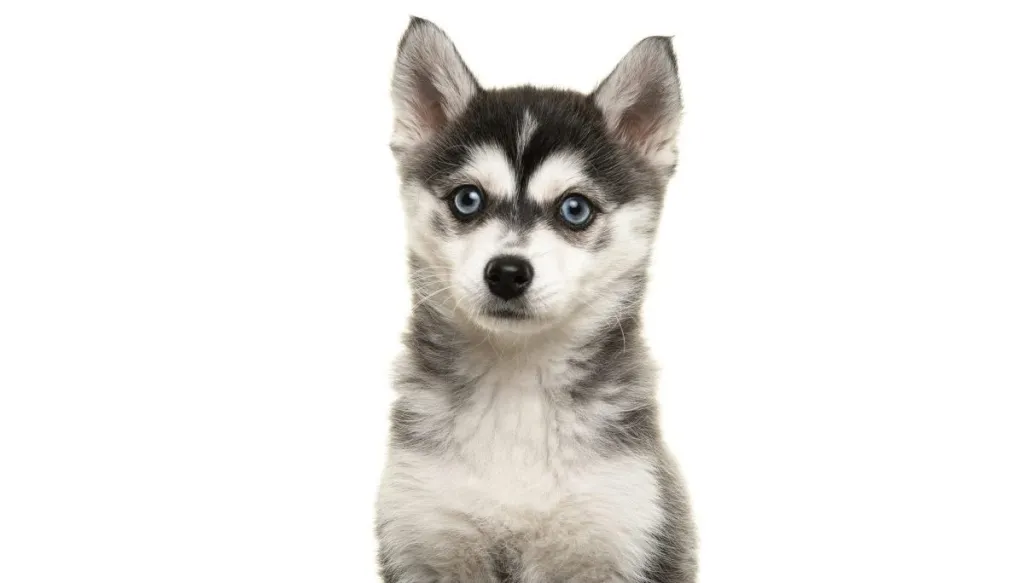Welcome to the adorable world of the Pomsky—where the spirited Husky meets the pint-sized Pomeranian! If you’re enchanted by these fluffy, pint-sized bundles of energy, you’re in for a treat. Join me as we explore everything you need to know about the Pomsky breed, from their origin story to their unique characteristics and how to care for these delightful hybrid dogs.
Origins and History of the Pomsky
Let’s uncover the backstory of the Pomsky, a relatively new hybrid breed that’s capturing hearts worldwide.
Ancestry Mix-Up: The Pomsky combines the spirited Siberian Husky with the charming Pomeranian. This mix results in a unique blend of traits from both parent breeds, including size, coat type, and temperament.
Rising Popularity: In recent years, the Pomsky has gained popularity for its small size and striking Husky-like features. Despite their differences in size, these dogs inherit the intelligence and energetic nature that make both Huskies and Pomeranians beloved companions.
Appearance and Characteristics
What makes the Pomsky stand out in the world of designer breeds? Let’s delve into their distinctive appearance and personality traits.
Physical Traits:
- Size: Pomskies are typically small to medium-sized dogs, ranging from 10 to 25 pounds (4.5 to 11 kg). Their size can vary depending on the genetics inherited from their Husky and Pomeranian parents.
- Coat: They often inherit a fluffy coat that can resemble either parent breed. Colors range widely and may include combinations seen in both Huskies (such as black, white, gray) and Pomeranians (such as red, orange, sable).
- Facial Features: Pomskies may inherit the distinctive almond-shaped eyes of Huskies and the small, pointed ears of Pomeranians, giving them an expressive and endearing appearance.
- Build: Despite their small stature, Pomskies are well-muscled and agile, reflecting their Husky ancestry.
Temperament: Pomskies are known for their playful and energetic personalities. They are intelligent, curious, and thrive on human companionship. While they may inherit some of the Husky’s independent streak, they also have a loving and affectionate side, making them excellent family pets.
Caring for Your Pomsky
Owning a Pomsky comes with unique considerations to ensure they lead a happy and healthy life. Here’s how to provide the best care for your playful Pomsky companion.
Nutrition: Provide a balanced diet tailored to your Pomsky’s size, age, and activity level. Choose high-quality dog food that meets their nutritional needs, and avoid overfeeding to maintain a healthy weight.
Exercise Needs: Pomskies are active dogs that require regular exercise to stay physically and mentally stimulated. Daily walks, play sessions, and interactive toys are essential to prevent boredom and channel their energy positively.
Training and Socialization: Early socialization and obedience training are crucial for Pomskies. They are intelligent and eager to please, but they may also inherit the Husky’s stubborn streak. Use positive reinforcement techniques and consistency to reinforce desired behaviors and manners.
Grooming Requirements: Their fluffy coat requires regular grooming to prevent matting and tangles. Brush your Pomsky’s coat several times a week and schedule professional grooming sessions as needed. Pay attention to their ears, teeth, and nails to maintain overall health and hygiene.
Common Health Considerations
While generally healthy, Pomskies may be prone to certain health issues inherited from their parent breeds. Regular veterinary check-ups and preventive care are essential to detect and manage these conditions early.
Health Conditions to Watch For:
- Hip Dysplasia: A common concern in medium to large breeds, including Huskies. Monitor your Pomsky’s mobility and consult your vet if you notice any signs of discomfort or limping.
- Eye Problems: Pomskies may inherit eye conditions such as cataracts or progressive retinal atrophy (PRA). Regular eye exams can help detect and manage these issues promptly.
- Dental Health: Small breed dogs like Pomeranians are prone to dental issues. Establish a dental care routine that includes regular brushing and professional cleanings to maintain oral health.
- Luxating Patella: This is a condition where the kneecap may dislocate, causing discomfort or lameness. Keep an eye on your Pomsky’s gait and consult your vet if you notice any abnormalities.
Tips for Living with a Pomsky
Here are expert tips to ensure a harmonious life with your lively Pomsky companion:
Understanding Their Energy Levels:
- Provide Mental Stimulation: Pomskies are intelligent dogs that enjoy challenges. Engage them with interactive toys, puzzles, or obedience training to keep their minds sharp.
- Exercise Regularly: Pomskies need daily exercise to burn off excess energy. Plan activities like brisk walks, fetch games, or agility training to keep them physically fit and happy.
- Monitor Their Health: Be proactive with veterinary care, including vaccinations, parasite prevention, and regular check-ups. Early detection and intervention can help maintain your Pomsky’s well-being.
Building a Strong Bond:
- Socialize Early: Expose your Pomsky to different people, pets, and environments from a young age. Positive experiences build confidence and encourage friendly behavior.
- Be Patient: Pomskies may exhibit stubbornness at times. Use positive reinforcement and patience during training to achieve desired behaviors and strengthen your bond.
Conclusion
Congratulations! You’ve now unlocked the delightful world of the Pomsky—a breed that combines the best of both the Siberian Husky and Pomeranian. Whether you’re drawn to their striking appearance, playful demeanor, or intelligence, owning a Pomsky promises years of joy and companionship. By understanding their unique characteristics, care needs, and health considerations, you’re well-equipped to provide a loving and fulfilling life for your Pomsky companion. Here’s to many wagging tails and unforgettable moments with your playful Pomsky!
- Best Lusha Alternatives for 2025 - April 19, 2025
- Best Overloop Alternatives for 2025 - April 19, 2025
- Best Snov.io Alternatives for 2025 - April 18, 2025



